We flew into Tokyo because it was the most convenient flight we could find, but we meant to see Osaka. In order to head westward via Shinkansen 新幹線, the high-speed rail, we first took a local train to Tokyo Station.
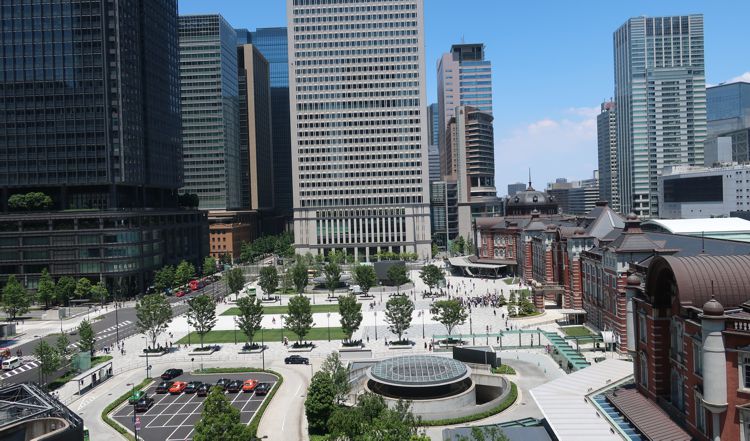
Tokyo Station
High-speed trains between Tokyo and Osaka ran every few minutes. Even the Nozomi trains, the fastest variety with very few stops, were as frequent as BART trains between Millbrae and San Francisco. Feeling no rush to depart or arrive at a particular time, we bought non-reserved seats so we could hop on any train that we felt like. That gave us flexibility to check out a highly rated sushi restaurant nearby.
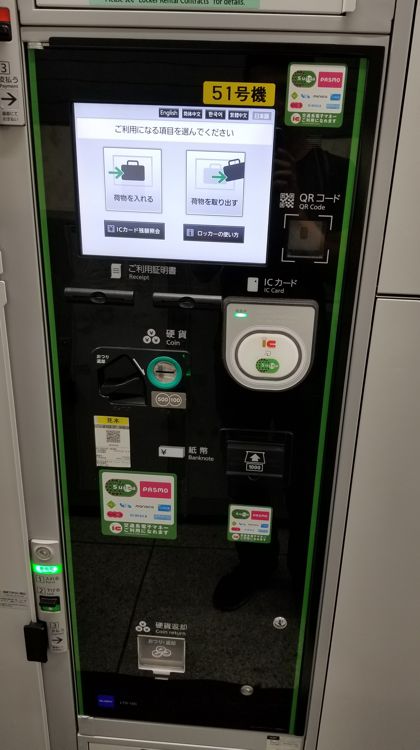
First, we put our luggage away in this digitized coin locker in the station;
the locker large enough to hold our 29″ suitcase cost about $10
The sushi restaurant we had in mind was Nemuiro Hanamaru, on the 5th floor of KITTE, a mall right next to Tokyo Station. We wandered there before the mall’s official opening time at 11. While the interior space was open, all access to higher floors were closed until the very specific 10:52 (per signage at the elevator). A dozen people already lined up for the elevator and escalators at 10:20. We chuckled assuming they were the ultimate mall rats who couldn’t wait to shop. We left, walked around the neighborhood, and returned a couple minutes prior to 11. It was then we realized that all those people, plus more, had gone up to the restaurant floor – and specifically to the sushi place that we wanted to go! Holy moly!
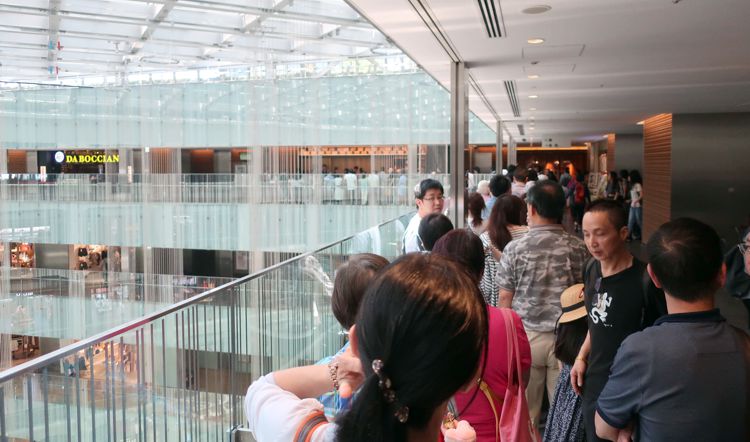
Arriving just before opening time meant that we were a quarter of the floor deep in line

Feeling sad wasn’t just hungry diners like us, but also this owner of restaurant whose entrance the sushi line blocked
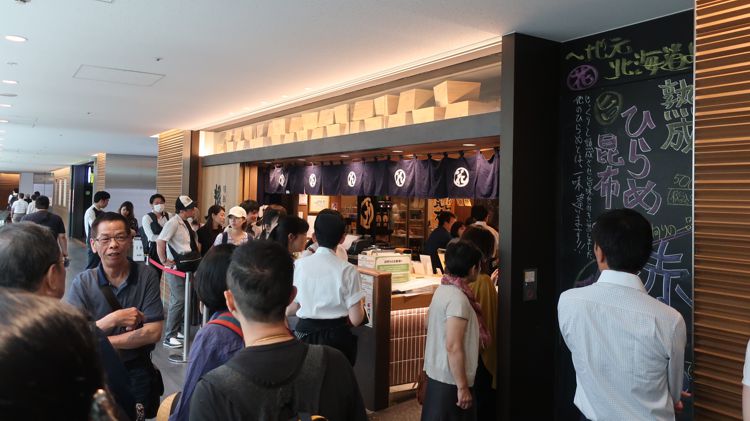
Our ridiculously long line took us to the front of the sushi place, where we got a number from an automated ticket machine to wait even longer
90 minutes later, we got seated. This was the longest we had ever waited for sushi. And it was conveyor belt sushi, which was supposedly more casual and faster dining! Oh well, it wasn’t just any conveyor belt sushi – it was the top of just about any list when you google “best conveyor belt sushi in Tokyo”. The food did not disappoint – in fact, while the quality rivaled the best sushi restaurants we’d been to, the a la carte flexibility (vs. the omakase set menus at nicer restaurants) was better because it allowed us to pig out on items that interested us the most. The price was incredible, too. We stuffed ourselves silly for roughly $45. That’s how much we’d expect to pay for mediocre sushi in San Francisco.
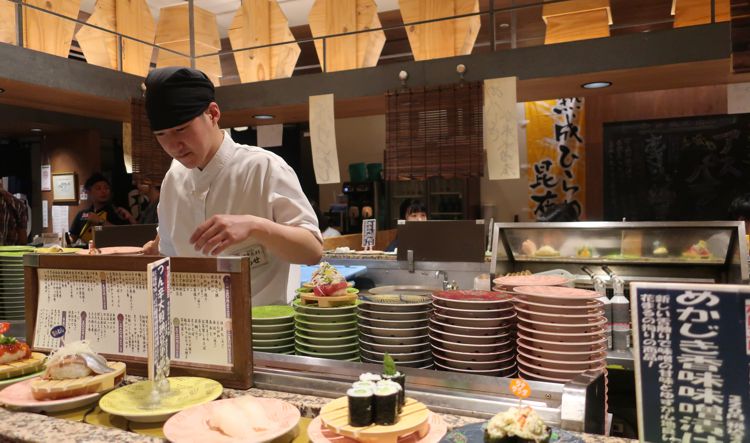
Conveyor belt sushi!
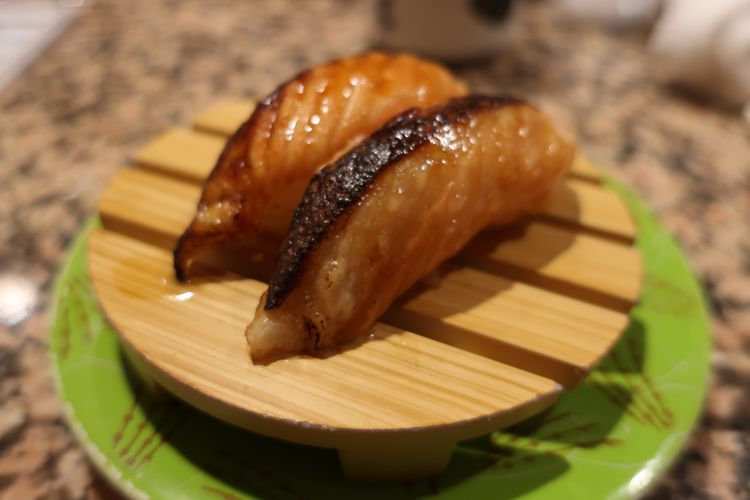
What was this? Some torched fatty fish. We had too many of these
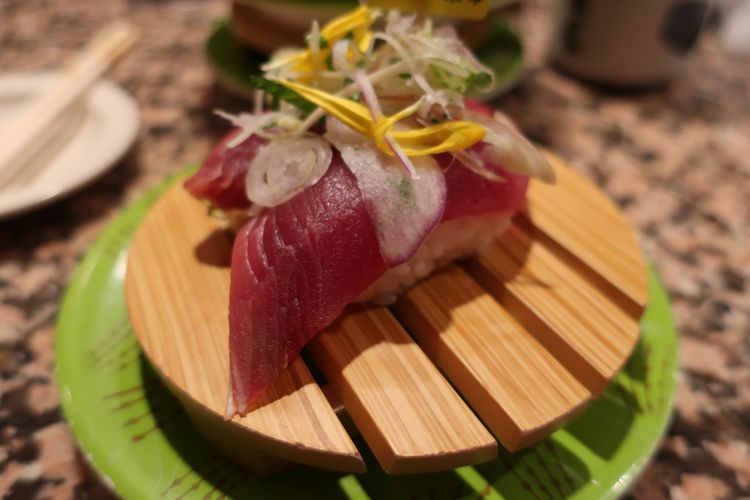
This tuna sushi topped with 8 herbs was the most unique thing here. I immensely enjoyed the garden fragrance
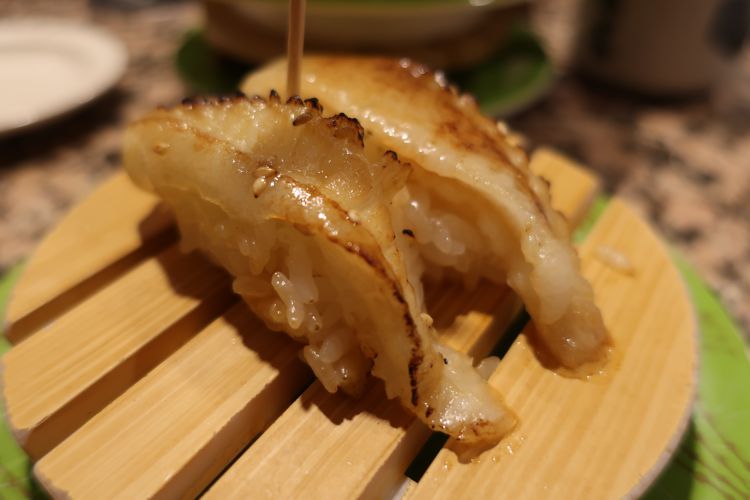
Something else we loved but could not name
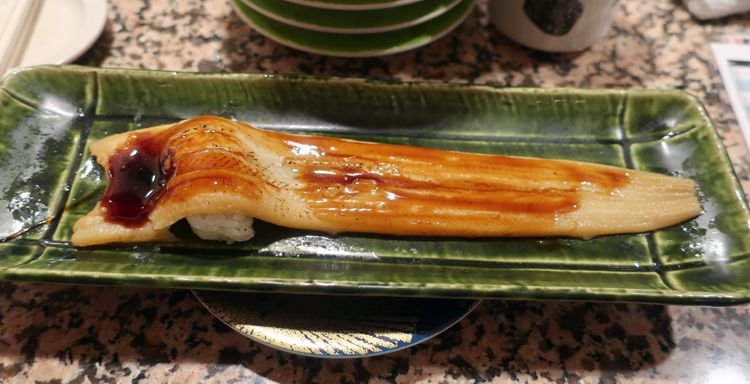
This was hilarious. A whole butterflied anago (saltwater eel) on a regular sushi-sized rice ball.
Apparently this was a thing, but when I saw it I was convinced that the chef was trolling us.
What should I order next? Tuna? I’d like to see a whole thing of that on a plate
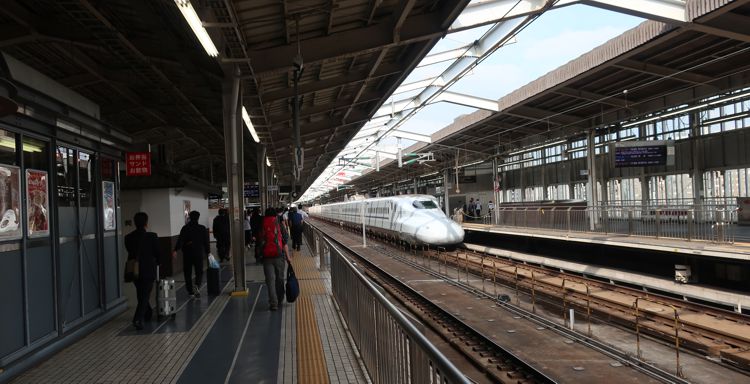
With stomachs full of fatty fish, we cancelled plans to buy bento boxes before boarding our speedy train to Osaka
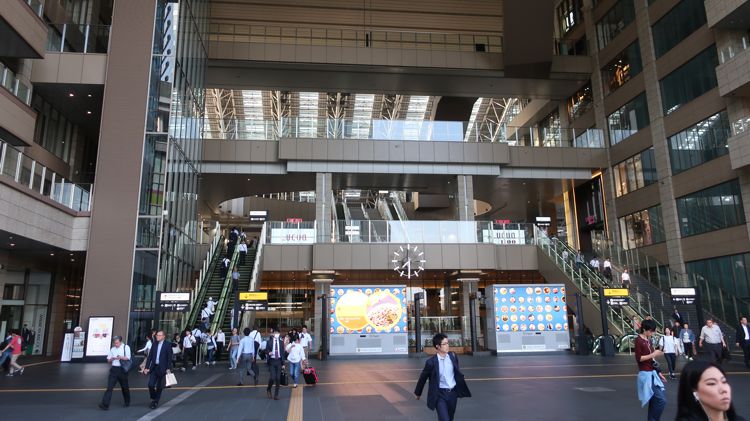
2.5 hours later, after a quick transfer at Shin-Osaka for a local train, we arrived at Osaka Station
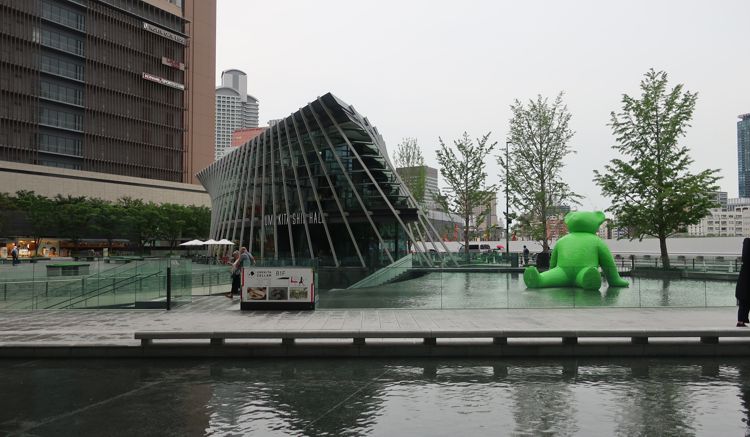
Grand Front Osaka, right outside the train station
INTERCONTINENTAL OSAKA
For the next four nights, we called this hotel home.
Similar to Park Hyatt Bangkok, InterContinental Osaka was in the upper half of a tower, connected to a mall, connected to another mall via footbridge, and connected to the train station via footbridge. It was neat that we could go from room to train without stepping onto the street.
This hotel was nice. The best among all InterContinentals we’ve been, in fact. It was a nice blend between service standards at a familiar American brand, and uniquely Japanese elements of hospitality. Most noteworthy was that it had an onsen, the Japanese public bath where the first rule of conduct is to get fully naked in public. Going to an onsen is an activity that both real Japanese and guidebook-driven tourists enjoy. I’ve always been mildly curious about it, but too mildly to go out of my way to check one out. This hotel having it really helped me out. So I tried it. And yeah, getting fully naked was weird.
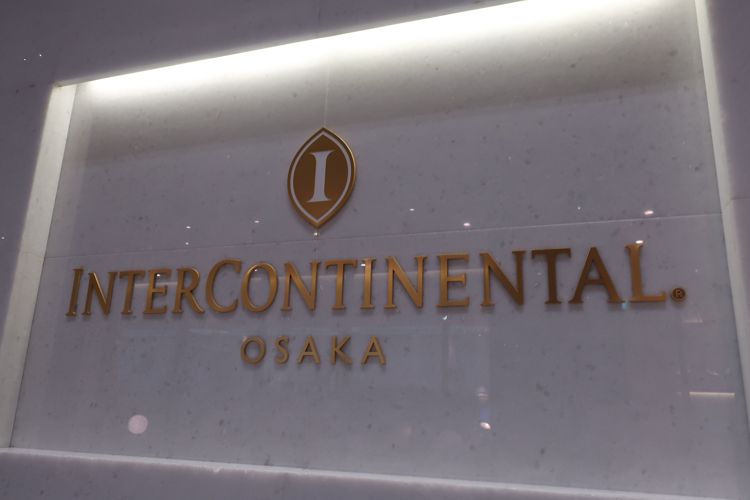
Back entrance to the hotel, inside the mall (Grand Front Osaka, north tower)
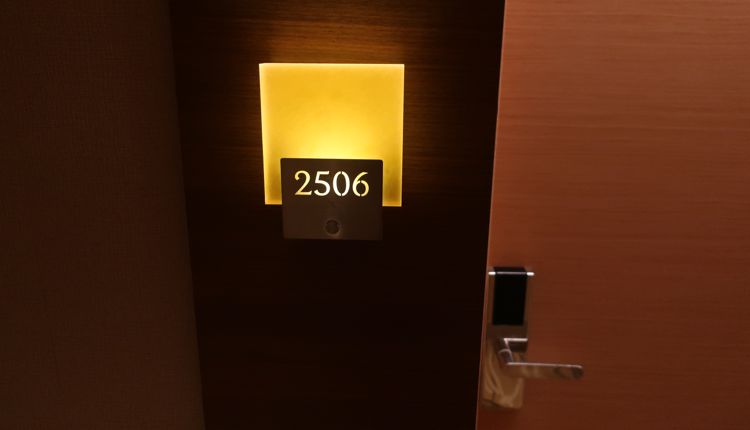
Room door
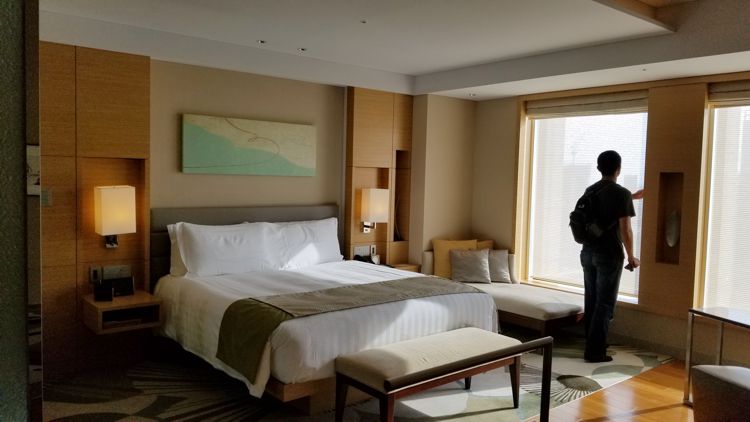
Nice and comfy room

My favorite thing in this room was this desk with drawers built into this big piece of rock
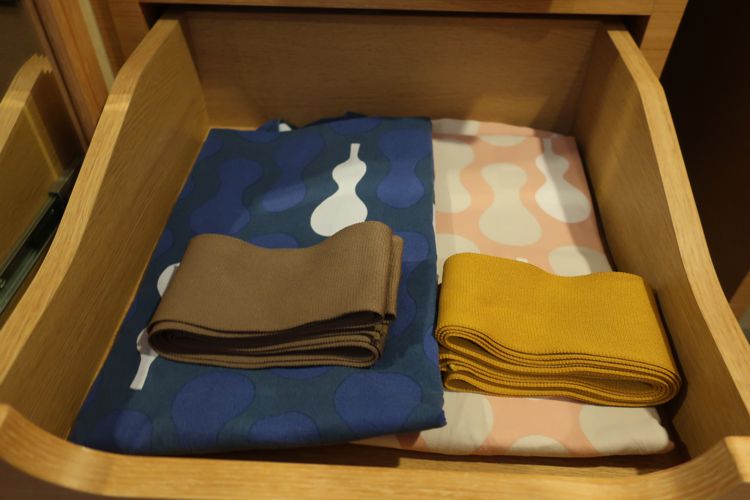
Japanese sleepwear
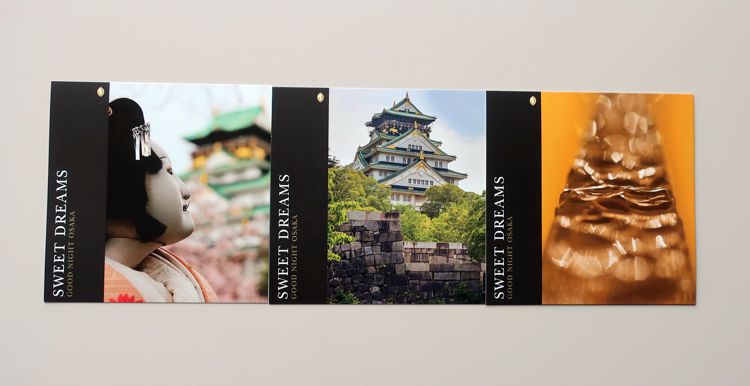
Each evening’s turn down service left us some sweets and a cute “sweet dreams” card.
Except for the leftmost card that was not cute at all… not sure how anyone could sleep after seeing that pale ghost’s face
TSUTENKAKU / TENNOJI
In the evening, we took the subway to the neighborhood surrounding Tsutenkaku 通天閣, a short TV tower that was considered tall back in the days. The whole neighborhood felt authentic, i.e. less modern than the other parts of Japan that we had seen, as if the whole place was stuck in the WW2 era. There were lots of restaurants, many of which sold kushikatsu (friend stuff on sticks).

Covered shopping arcade
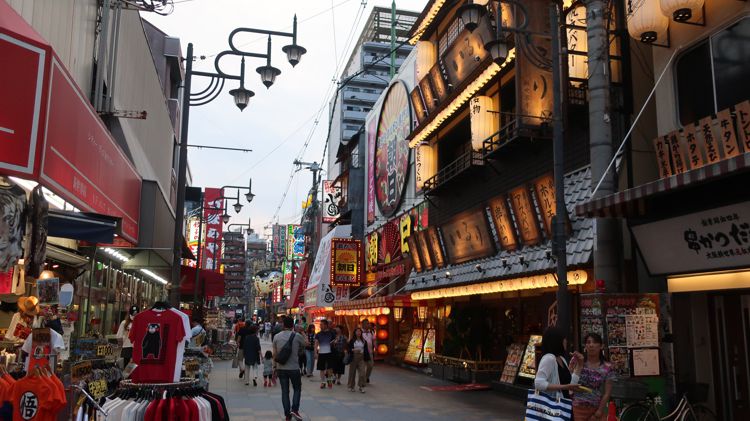
Big chain restaurants
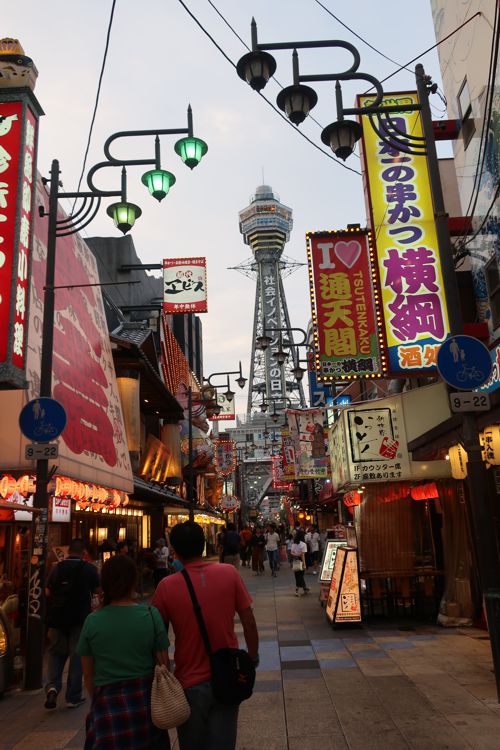
Tsutenkaku 通天閣
After dinner, we walked half a mile to Abeno Harukas at Tennoji 天王寺 Station, for its observatory. The walk there was eerily dark and quiet, though did not feel unsafe. Well, the worse that we came across was a behavior that we could not rationalize…
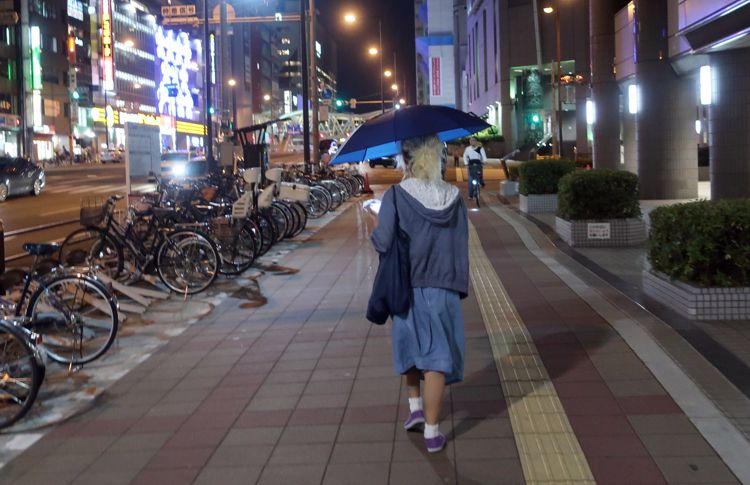
Why was this lady holding an umbrella on a dry, clear night? The street lights weren’t even that bright…

An artist’s rendering of Abeno Harukas

Elevator leading up to Harukas 300, the observatory atop the 300-meter building
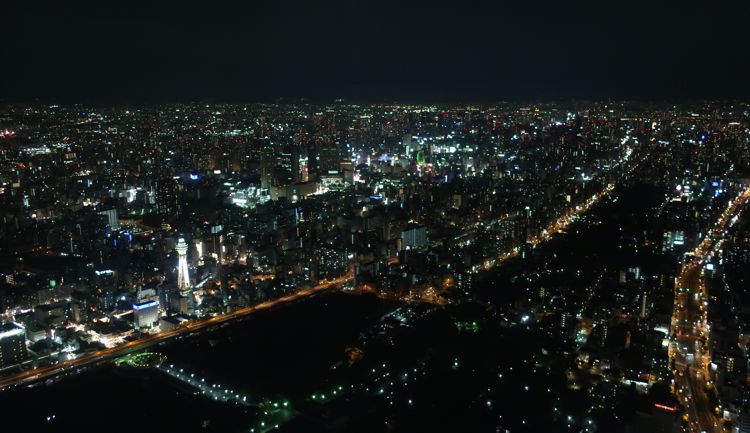
View from Harukas 300
One thing I’d say about the Japanese is that they are really awesome at marketing. Even when the stuff is mediocre, their superior packaging makes it desirable and pumps you up. In this instance, everywhere you look online or on site, Abeno Harukas was advertised as the tallest building in Japan. That feels like a big deal, right? Especially when pop culture bills Japan as full of skyscrapers, that status seems almost extraordinary. Then there’s this chart that tells you how this observatory was the second highest in Japan, beating out Tokyo Tower.
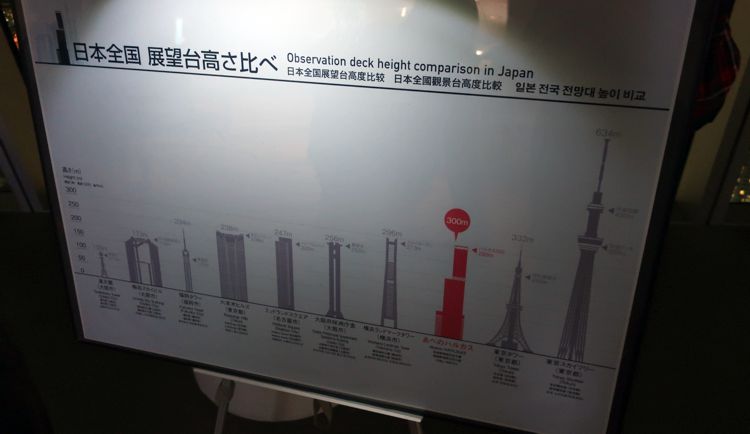
Note: Tokyo Tower and Tokyo Skytree are towers, not buildings
Then you look around the world and realize that 300 meters is not all that impressive for a skyscraper. In fact, Abeno Harukas sits outside the world’s tallest 130 buildings list… No, this fact wasn’t detrimental to the observatory experience, as we enjoyed it as much as we enjoyed Burj Khalifa. It was just rather amusing how much marketing went into the superlatives by carefully choosing the right comparison group.
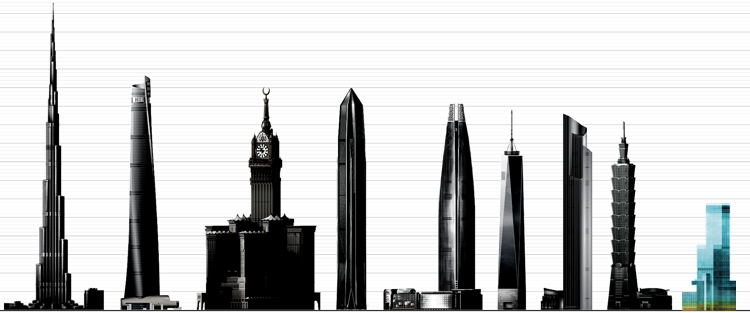
Abeno Harukas (rightmost) next to the world’s top 8 buildings
Pacific Islands 2018 Index
- Hawaii Four-O
- Surf & Turf Adventures
- Island Eats
- On To Japan
- Osaka via Shinkansen
- Castle Day
- Deer & Whale Shark
- Osaka Urban Hangouts
- Tasty Japan
- Japan Favorites
Pacific Islands (9/10) – Tasty Japan – Peter's Blog
July 25, 2018 at 1:28 am[…] Osaka via Shinkansen […]